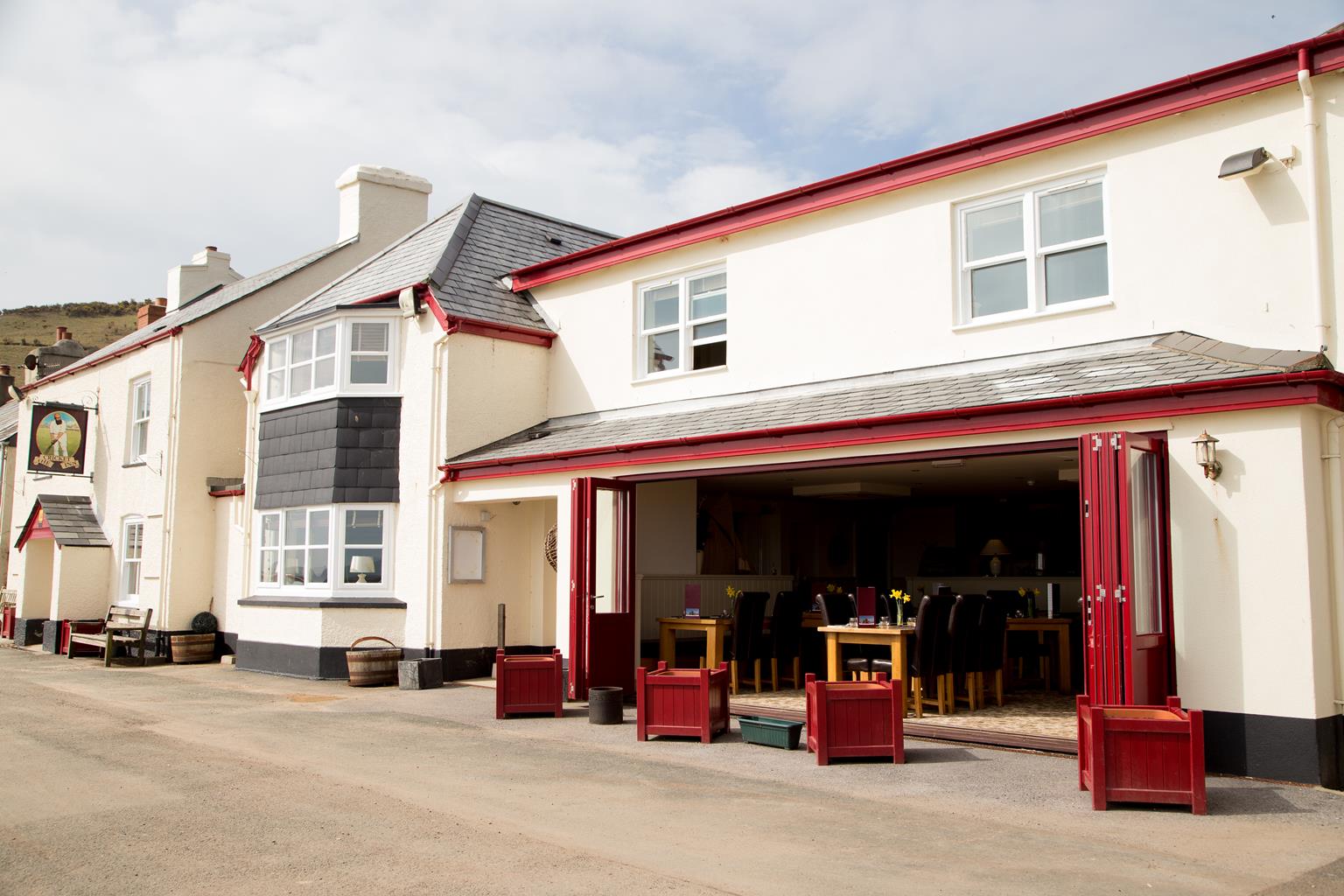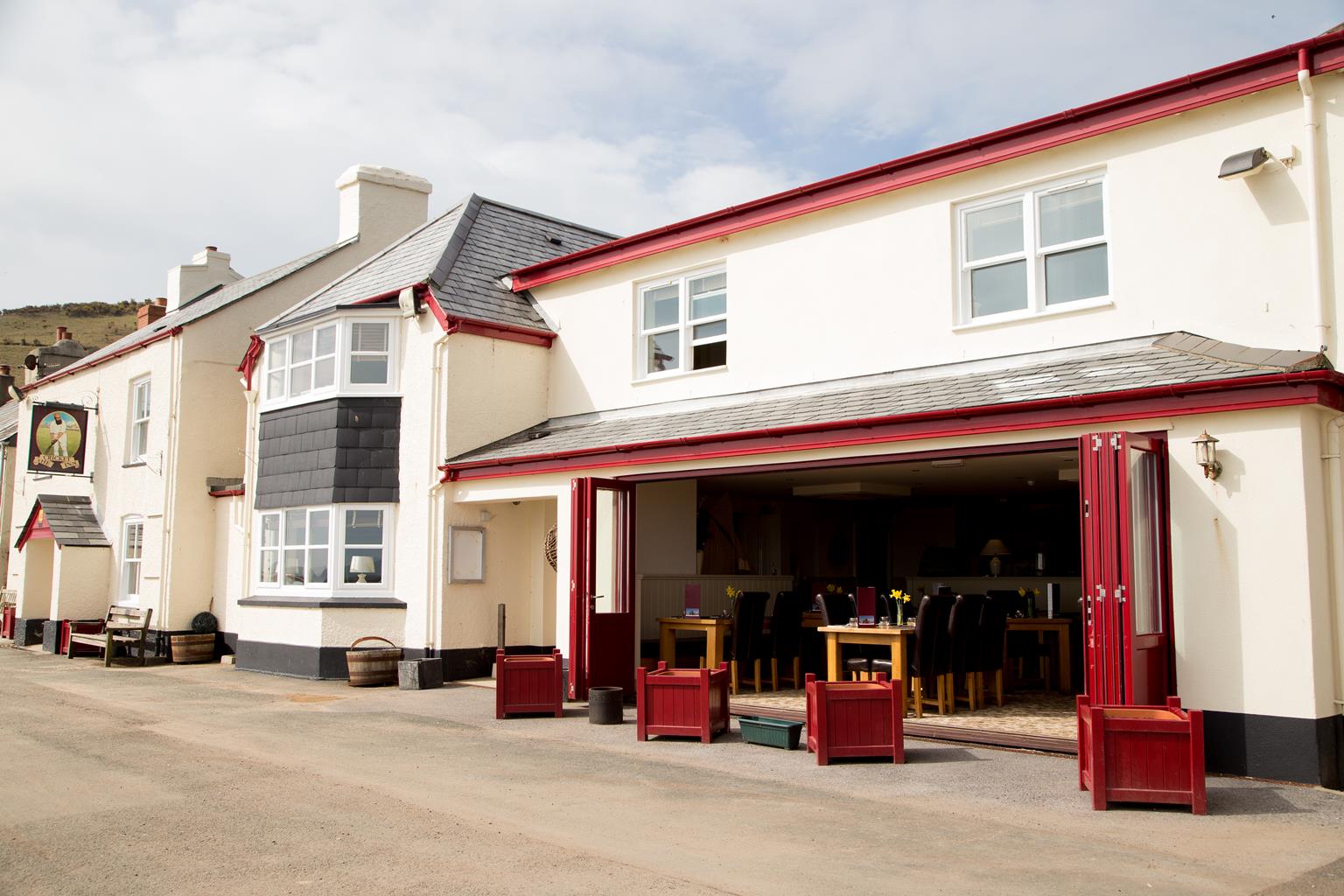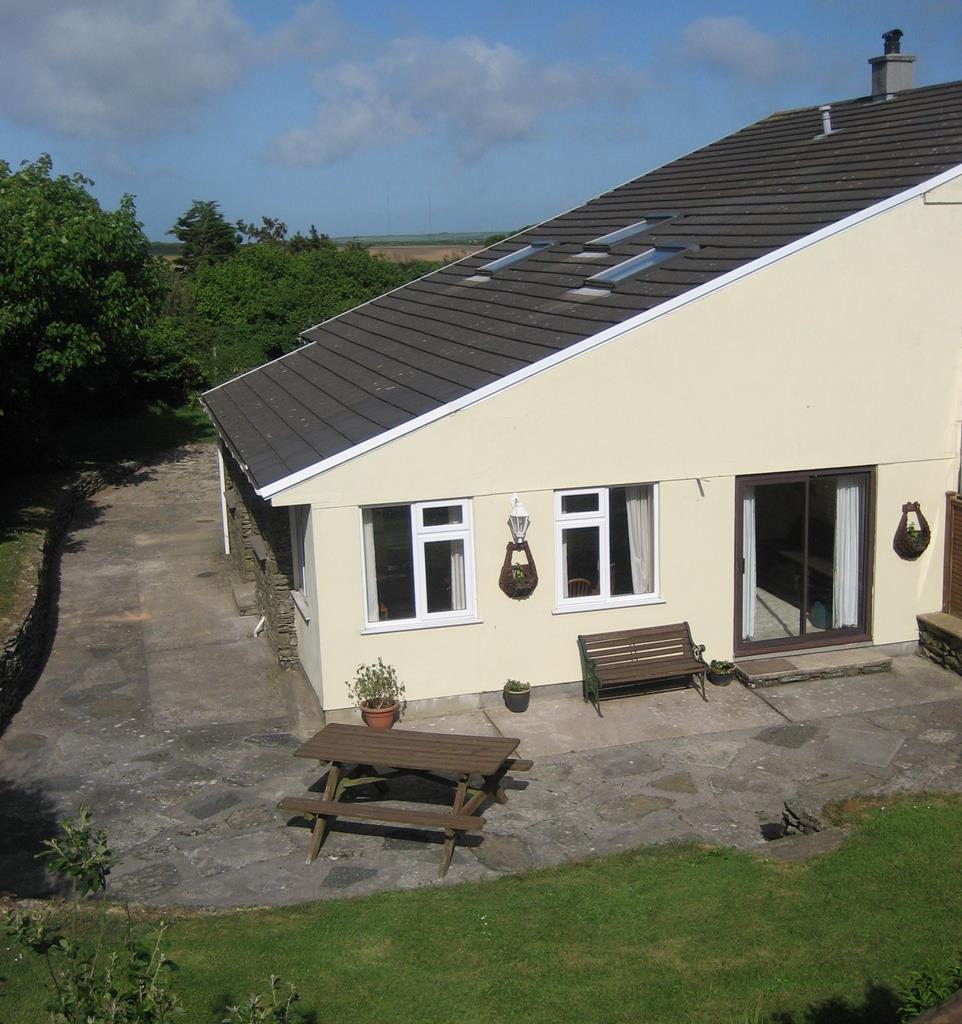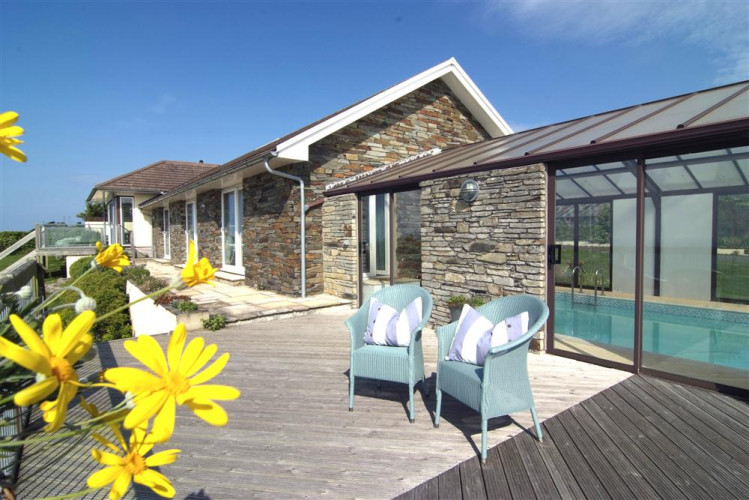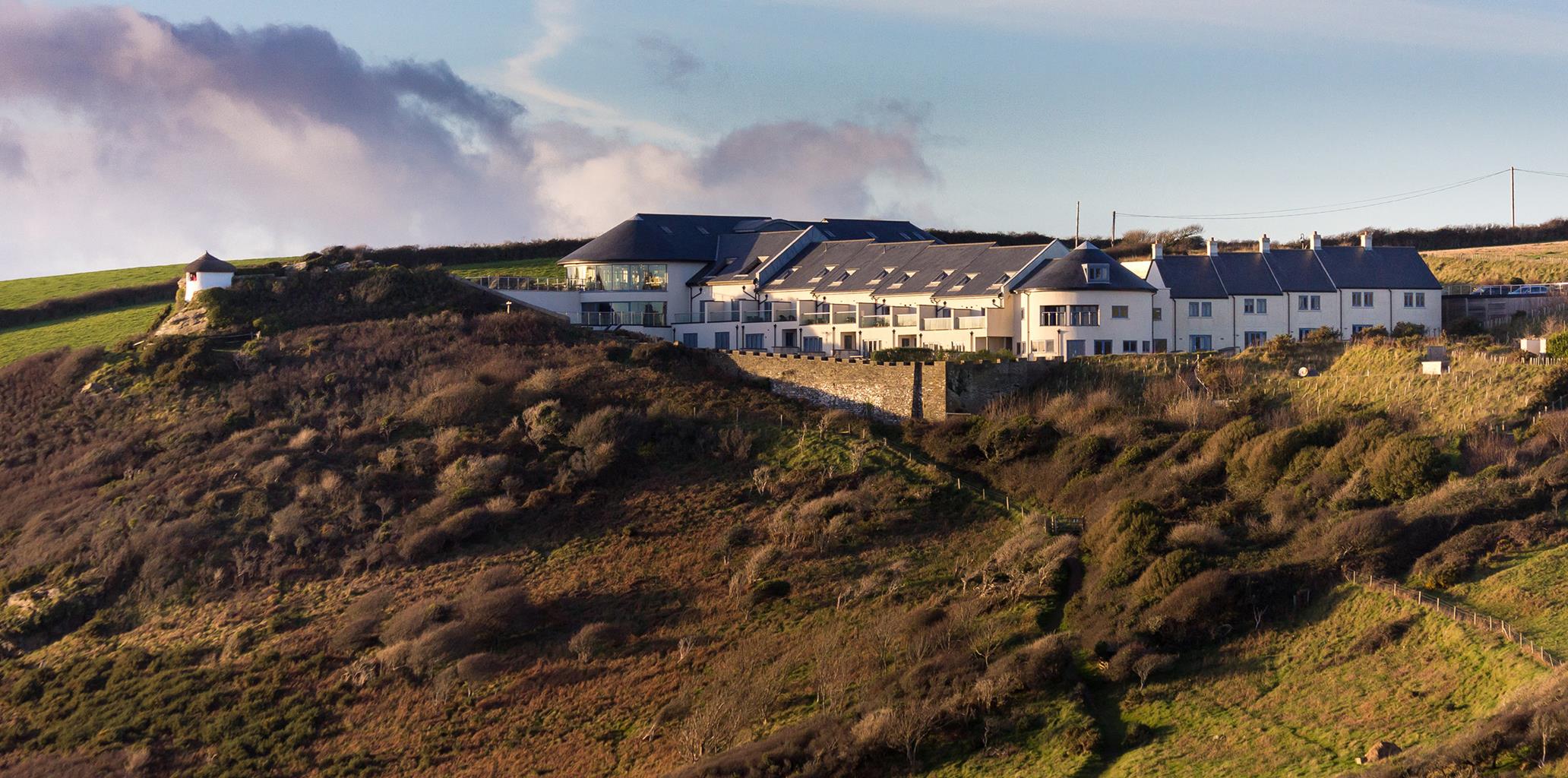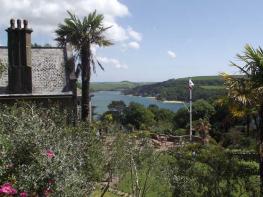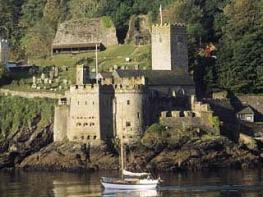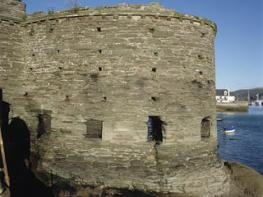Higher House Farm Cottage is attached to the main farmhouse of a traditional working farm and…
Prawle Point

4.25 miles (6.8kms)
About the walk
It seems to take forever to get to East Prawle. The first signpost for the village, seen not far from Chillington, between Stokenham and Kingsbridge in the South Hams, tells you that it’s only 4 miles (6.4km) away, and from then on you seem to be constantly turning left or right, along miles of typical banked, flower-filled Devon lanes, and never really getting very far. But then suddenly you’re there – by the little green in the middle of the village, with its wonderfully remote yet open feeling. It’s completely unspoilt, and very popular with Devon people who want a simple camping holiday without leaving the county. A week under canvas in good weather at Prawle and it’s hard to leave. Prawle Point, just below the village, is the most southerly point in Devon. The easiest way to get there is by car, but it’s far more satisfying to submit to the sleepy atmosphere and wander down the lanes and along the coast, past some of the most beautiful – and relatively undiscovered – coves in Devon.
The lookout at Prawle Point is today manned on a voluntary basis to keep an eye on this particularly busy part of the coast. Originally a coastguard station, with a 270-degree field of vision, it was used by Lloyds of London to report the arrival of ships from across the Atlantic. In use as a naval signal service station from 1937 to 1940, it shut down as a permanent coastguard station in 1994. Prawle Point means ‘lookout hill’ in Old English, so this practice could date back to Saxon times.
Prawle Point is home to a great variety of birds and, due to its southerly position, is visited by a wealth of early and rare varieties on spring and autumn migrations. Birders can usually see herring gulls, cormorants, shags, common terns and gannets (and – if lucky – sea mammals such as dolphin and porpoise, as well as grey seals). The rare and localised cirl bunting is also a resident here – there were only 80 pairs in the country in 1989, but successful conservation measures have lead to a considerable increase in numbers.
The volcanic rocks of the coast here are some of Devon’s oldest, dating back over 400 million years. Pressure from the earth’s movements split the strata and realigned them into parallel bands. The pounding sea then created the split, angular rocks evident today. The raised beach below East Prawle, a distinctive platform 15ft (4.5m) above the present beach, was formed during the last two million years in times of warmer weather conditions and higher sea levels, which altered coastal erosion patterns.
Walk directions
Walk down the lane towards the sea, leaving the green to the left and toilets and a phone box right and following a sign ‘Prawle Point’. The road bends right and then sharp left, at which point; go straight ahead along a deeply rutted green lane marked ‘Public Bridleway’.
The green lane ends at a T-junction (metal gates opposite); turn left down a very narrow grassy path between tumbledown, overgrown old walls. There are fine views of the coast ahead. Follow the path through a kissing gate to the footpath post.
Turn right downhill to reach the coast path high above secluded Maceley Cove, with Gammon Head to the right. Turn left and walk along the path above Elender Cove. There is steep, scrambly access to both beaches so take care.
The path leads through a kissing gate and scrambles on around Signalhouse Point. A steep ascent, partly stepped, is rewarded with fine views ahead to Prawle Point; look back to see lofty Bolt Head at the mouth of the Salcombe estuary. Follow coast path posts through a gate and across the grassy down, keeping to the right of the coastguard lookout.
At the coastguard lookout enjoy superb views east to Lannacombe, Mattiscombe Sand and Start Point. Explore the excellent visitor centre, which will tell you everything you want to know about the area. To continue, follow the grassy path inland, rejoining the coast path, turning right through a kissing gate by the old coastguard cottages.
Pass in front of the cottages and along the edge of the level, grassy wave-cut platform which lies just below the original Pleistocene cliffs here. Pass through a gate (note a parking area across the field to the left) and along lovely level meadows above low cliffs. Go through the next kissing gate and round Langerstone Point. Continue along the seaward edge of fields, passing through several gates, with views to Maelcombe House ahead. Eventually pass through two more gates and keep ahead to a path junction.
Turn left up the bridleway; soon pass through a gate and keep ahead up the track.
Take the first stone stile right to go very steeply up the field. There are good views back to the coast when you stop for a breather. Cross the stone stile at the top and continue right up the narrow rocky track to join the lane; turn right and climb steeply to the village.
Additional information
Green lanes, fields and coast path, rocky in places; several stiles
Coastal farmland, rocky coves and level raised beaches
Keep on lead in fields
OS Explorer OL20 South Devon
Around green in East Prawle
By green in East Prawle
WALKING IN SAFETY
Read our tips to look after yourself and the environment when following this walk.
Find out more
Also in the area
About the area
Discover Devon
With magnificent coastlines, two historic cities and the world-famous Dartmoor National Park, Devon sums up all that is best about the British landscape. For centuries it has been a fashionable and much loved holiday destination – especially south Devon’s glorious English Riviera.
Close to the English Riviera lies Dartmoor, one of the south-west’s most spectacular landscapes. The National Park, which contains Dartmoor, covers 365 square miles and includes many fascinating geological features – isolated granite tors and two summits exceeding 2,000 feet among them.
Not surprisingly, in Dartmoor the walking opportunities are enormous. Cycling in the two National Parks is also extremely popular and there is a good choice of off-road routes taking you to the heart of Dartmoor and Exmoor. Devon’s towns and cities offer stimulating alternatives to the rigours of the countryside.
Nearby stays
Restaurants and Pubs
Nearby experiences
Recommended things to do
Why choose Rated Trips?
Your trusted guide to rated places across the UK
The best coverage
Discover more than 15,000 professionally rated places to stay, eat and visit from across the UK and Ireland.
Quality assured
Choose a place to stay safe in the knowledge that it has been expertly assessed by trained assessors.
Plan your next trip
Search by location or the type of place you're visiting to find your next ideal holiday experience.
Travel inspiration
Read our articles, city guides and recommended things to do for inspiration. We're here to help you explore the UK.





